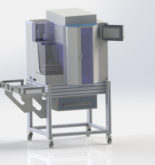The idea of recycling waste materials as fuel is nothing new; biogas and the suchlike have been scientific avenues of exploration for decades now. However, Dutch researchers have struck upon an innovative and perhaps more literal interpretation – recycling waste toilet paper (WTP).
As a necessary commodity that is used by millions of households all over the world, WTP could essentially be a free form of energy. What’s more, although the process could have high start-up costs, it’s operational costs and efficiency are comparable to existing forms of energy generation.
An untapped resource
Of course, not everyone uses toilet paper. In certain developing countries it’s not available, in other nations in the East it’s simply not part of the culture. However, in the Western countries which do use it, it’s used a lot.
In Western Europe, for example, the average person flushes 14kg of WTP down the drain every single year; in America, that figure rises even higher. Just imagine how much energy we could produce if the latent power inside WTP could be harnessed? Well, doing so might not be the most pleasant thought, but luckily a team of scientists over at the University of Amsterdam (UvA) have furthered the analysis of complex environmental matrices by doing so for us.
Dirty work well worth the effort
In a paper published in the journal Energy Technology, the team from UvA found that it was possible to turn this unsightly waste product into electricity through a two-stage process. Firstly, they subjected the WTP to gasification, turning its organic carbon matter into carbon monoxide (CO), carbon dioxide (CO2) and hydrogen (H).
Then, these gases were converted directly into electricity through the use of high-temperature, solid-oxide fuel cells, resulting in clean energy ready for use. The ground-breaking study found that the overall efficiency of the technique could reach 57%, which is comparable to current methods of natural gas energy conversion.
Taking the Dutch capital of Amsterdam as their example, they calculated that the 10,000 tonnes of WTP flushed down the toilet by residents of the capital could be enough to power 6,400 homes a year. Not bad for toilet paper!
Competitively renewable
Because toilet paper is composed of 80% cellulose that is stripped directly from the bark of a tree, it’s essentially a renewable fuel source. At present, it also represents one with a negative cost, since the transportation of WTP through the sewage system and its subsequent storage costs more than it would to reuse it as a fuel source. However, the researchers did highlight that this cost could rise if it began to be viewed as a commodity rather than a waste product.
And what about the cost of energy production? While initial start-up costs are high, they are expected to fall as the technology progresses and becomes more widespread. As for the levelized cost of electricity (LCOE), that currently stands at around 15.3p/kWh, which is comparable to the most advanced solar projects, such as the ones underway at Lufft and similar companies.
Even more encouragingly, the scientists estimate that these costs could be brought down to 8.3p/kWh as competition increases. It’s early days, but the sky could be the limit for the humble toilet roll.



